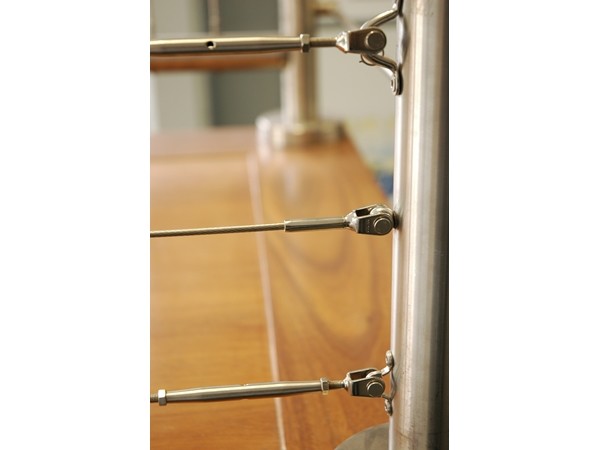Stainless steel wire ropes are a great material for highly visible balustrades. Easy to install at relatively low costs, it promises a long-life alternative to traditional balustrade and railing infill materials.
The Grade 316 stainless steel wire rope from Bridco is especially suitable for outdoor balustrades.
Stainless steel wire rope is commonly supplied in either of two stainless steel grades, 304 and 316. Grade 316 has a higher corrosion resistance, and is more suited to outdoor balustrades.
According to Managing Director of Bridco, Cliff Bridge, there are three types of construction, with their descriptions derived from the number of wires and strands that make up the wire rope.
1x19 construction is one strand made up of 19 individual wires. This is a fairly stiff wire rope that is suitable for fittings that are typically hydraulically pressed to the wire.
The benefits of this wire are its very clean appearance, minimal stretch and low maintenance.
7x7 construction, whereby there are seven wires in seven strands, is a more flexible type of wire rope suited to pressing using a thimble and eye as it will easily bend around a thimble.
Finally, the 7x19 is a wire rope made up with a lot of thinner wires. However, due to maintenance issues, it is not recommended for outdoor balustrades and railings.
“Foreign contamination, salts and air bore particles can become caught in the fine strands, and are hard to flush out, which causes ‘tea staining’, or ‘rusting’,” notes Bridge.
He adds that while stainless steel is low maintenance, it is certainly not maintenance free. Periodic flushing with fresh water will keep the ropes clean of foreign contaminants.

Quality
Stainless steel wire rope is made in several different countries, with South Korea being one of the most producers. Most of the wires from this region are of high quality, with some even going through electro polishing for greater corrosion resistance.
“It is always better to get an established brand name wire than cut costs with cheaper material,” Bridge advises.
“This is also true with the wire rope fittings.”
For outdoor balustrade installations, care should be taken to ensure that wire tension is maintained during the life of the balustrade, in accordance with the tension values and maximum deflections dictated by the Building Code. This can sometimes be achieved via the incorporation of ‘lock-off’ devices that prevent the wires from loosening.

